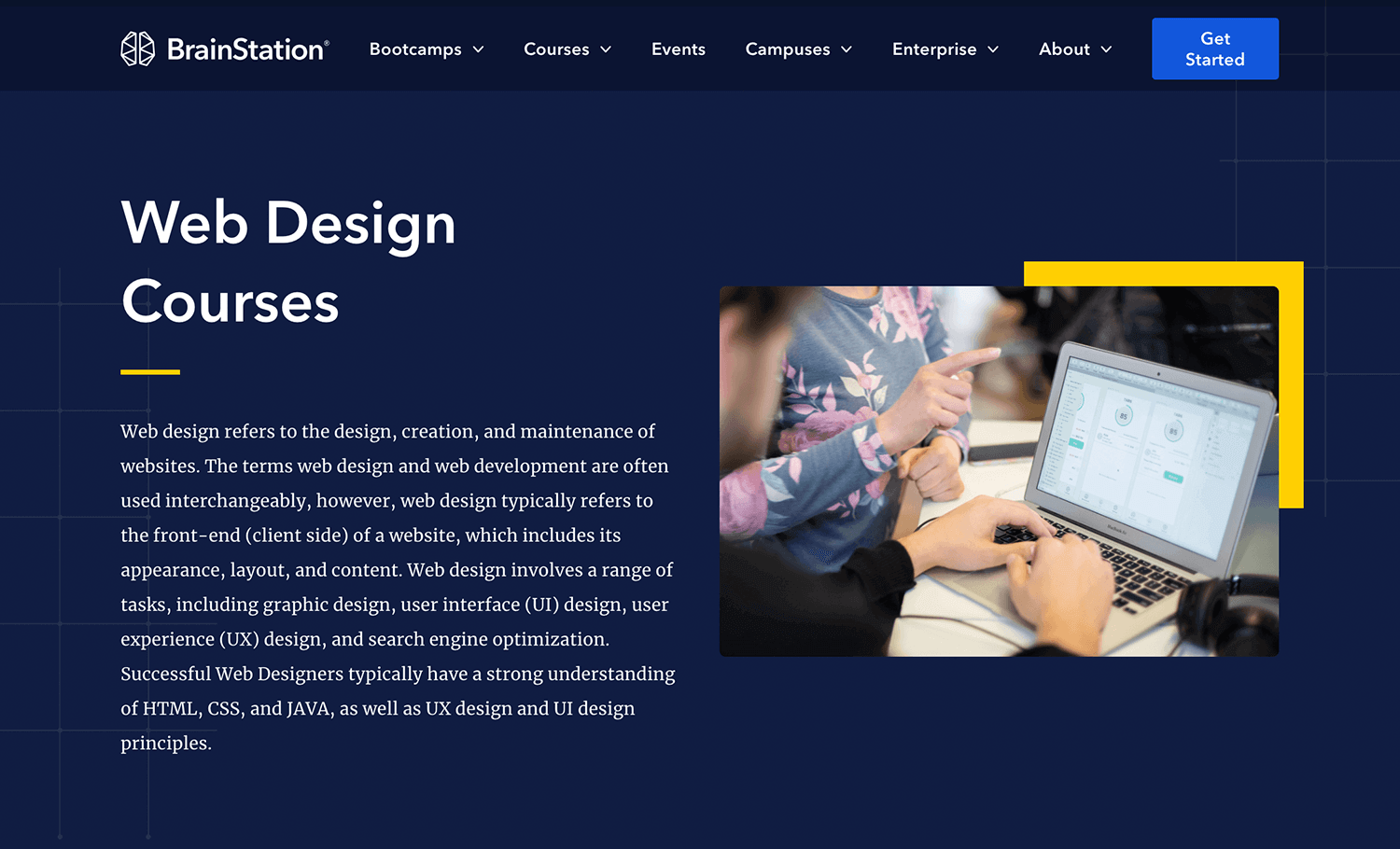Why Web Design and User Experience Must Go Hand-in-Hand for Success
Elevate Your Online Existence With Sensational Web Layout Tips and Trends
The interaction of visual charm, present style trends, and individual experience plays a crucial duty in achieving this objective. The nuances of effective design expand past appearances; understanding vital approaches for optimization can significantly affect your success.
Significance of Visual Appeal
In today's digital landscape, the aesthetic appeal of an internet site is critical; studies indicate that 94% of initial perceptions are design-related. This figure emphasizes the vital function that aesthetics play in user involvement and retention. A properly designed internet site not only attracts site visitors yet additionally motivates them to discover its content additionally. Reliable aesthetic design encompasses elements such as color design, images, layout, and typography, every one of which contribute to a natural and attractive customer experience.
Additionally, a visually attractive web site instills a sense of reputation and professionalism and trust. Individuals are more most likely to trust a website that looks polished and well-structured, which can considerably affect conversion rates. On the other hand, a chaotic or unpleasant style can cause high bounce prices, as users may perceive the website as undependable or outdated.
Moreover, the appearances of a web site can convey brand name identification and worths (Web design). Regular use of branding elements, such as logo designs and shade combinations, reinforces acknowledgment and promotes a deeper link with the audience. To conclude, focusing on aesthetic allure is vital for developing interesting, credible, and brand-aligned online experiences that reverberate with users
Present Layout Fads
Modern web style is regularly advancing, and remaining updated with existing fads is vital for creating impactful on-line experiences. One popular trend is the rise of minimalism, identified by tidy lines, enough white room, and an emphasis on important aspects. This approach not just boosts usability yet additionally allows material to take spotlight.
In addition, dark setting interfaces have actually acquired appeal, giving individuals with an aesthetically striking alternative while decreasing eye strain. This fad aligns well with individual choices, offering a modern aesthetic that is both elegant and practical.
An additional notable trend is the unification of vibrant typography. Developers are significantly making use of big, meaningful font styles to develop visual pecking order and share brand messages effectively. Paired with vibrant color schemes, this trend adds dynamism to websites.

Necessary Design Components
Effective website design hinges on several crucial style aspects that together develop a natural and interesting customer experience. The very first of these components is design, which dictates how content is organized on the page. A well-structured layout not only enhances readability but additionally guides users with the site seamlessly.
Shade plays a vital function in style, affecting feelings and brand perception. An unified color combination can evoke specific sensations and establish a visual pecking order, consequently attracting interest to vital aspects. Similarly, typography is essential; the selection of typefaces have to align with the brand name identification and guarantee legibility across gadgets.
Furthermore, whitespace is usually forgotten but is vital for producing balance. It aids avoid mess, enabling users to focus on the essential aspects without disturbance.
Finally, consistency across all layout components strengthens brand identification and makes navigating user-friendly. By diligently integrating these necessary design elements, internet developers can create aesthetically appealing and practical websites that mesmerize site visitors and urge interaction.
Individual Experience Optimization
A seamless customer experience is crucial for preserving site visitors and driving conversions on a website. Maximizing customer experience (UX) involves recognizing your target market and customizing style components to meet their demands effectively. Trick parts of UX optimization consist of intuitive navigating, quickly filling times, and clear phone calls to action.
Incorporate breadcrumb trails to aid individuals conveniently backtrack, decreasing aggravation. Rate is another crucial factor; sites must click over here load within 3 seconds to avoid individuals from deserting the website.
Furthermore, your site's style should prioritize quality. Usage readable typefaces, contrasting colors, and whitespace to produce a visually enticing format that guides customers with content effortlessly. Contact us to action ought to be prominently displayed, making use of workable language that urges individuals to involve.
Mobile Responsiveness Techniques
Almost half of all internet traffic currently originates from mobile tools, emphasizing the relevance of implementing durable mobile responsiveness methods. To guarantee optimal user experience throughout numerous screen dimensions, web developers should welcome a fluid grid format that adjusts perfectly to different gadgets. This method allows material to resize and restructure without jeopardizing capability or visual appeals.
Incorporating versatile images and media questions is essential. Pictures must immediately readjust their size according to the viewport, while media inquiries can find tool characteristics and apply tailored CSS styles appropriately. This technique enhances load times and makes sure that users have a visually attractive experience.
In addition, prioritize touch-friendly navigation elements. Buttons and web links should be quickly tappable, with adequate spacing to avoid misclicks. Avoiding hover-dependent interactions even more improves functionality on touchscreens.
Lastly, conducting regular testing across numerous devices and browsers is Going Here important. Tools like Google's Mobile-Friendly Examination can aid determine locations needing renovation. By adopting these mobile responsiveness strategies, companies can improve individual involvement, boost internet search engine rankings, and eventually drive conversions, thereby raising their online existence successfully.
Conclusion
To conclude, the implementation of efficient web style methods significantly improves on-line visibility. By focusing on visual allure via existing layout trends and important elements, organizations can promote credibility and involvement. Enhancing individual experience and guaranteeing mobile responsiveness are crucial for promoting smooth interaction across gadgets - Web design. As the digital landscape advances, welcoming these concepts will not only astound site visitors but also drive conversions, ultimately contributing to the total success of on the internet endeavors.

On the other hand, a messy or unpleasant design can lead to high bounce rates, as customers might regard the site as untrustworthy or obsolete. - Web design
Efficient web design pivots on a number of crucial layout elements that together produce a appealing and cohesive customer experience. Enhancing customer experience (UX) involves understanding your target market and customizing design elements to meet their demands successfully.